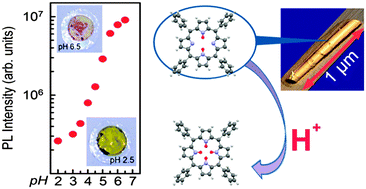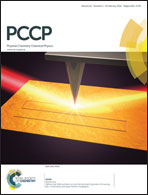Mineral–organic hybrid nanotubes as highly sensitive solid state optical chemical sensors
Abstract
Hybrid materials represent one of the strategies of materials science for accomplishing complex functionalities hardly encompassed by single-component systems. The critical step in this approach is the mixing and/or bonding between the two different components, which must preserve the original characteristics of the materials or give rise to new functionalities originating from a proper and controlled interaction between the two components. Here, we demonstrate the use of the ionic self-assembly approach for fabricating functional nanomaterials comprising an inorganic matrix constituted by synthetic geomimetic chrysotile nanotubes and an organic superficial layer of a free-base porphyrin. The resulting hybrid nanomaterial can be processed as colloidal solution and as thin solid film. In both phases, the hybrid shows a bright red fluorescence under UV-blue excitation at ca. 400 nm. This fluorescence exhibits decreasing intensity with decreasing pH, as a result of the porphyrin J-type aggregation strongly catalyzed by the mineral surface. Simultaneously, the aggregation induces a neat color change from red to green, serving as a fast direct visual test of pH variations. These results open the route for the utilization of bio-compatible and inert mineral nanomaterials with strong adsorbing properties as efficient and cost-effective solid state vectors for functional molecules.


 Please wait while we load your content...
Please wait while we load your content...